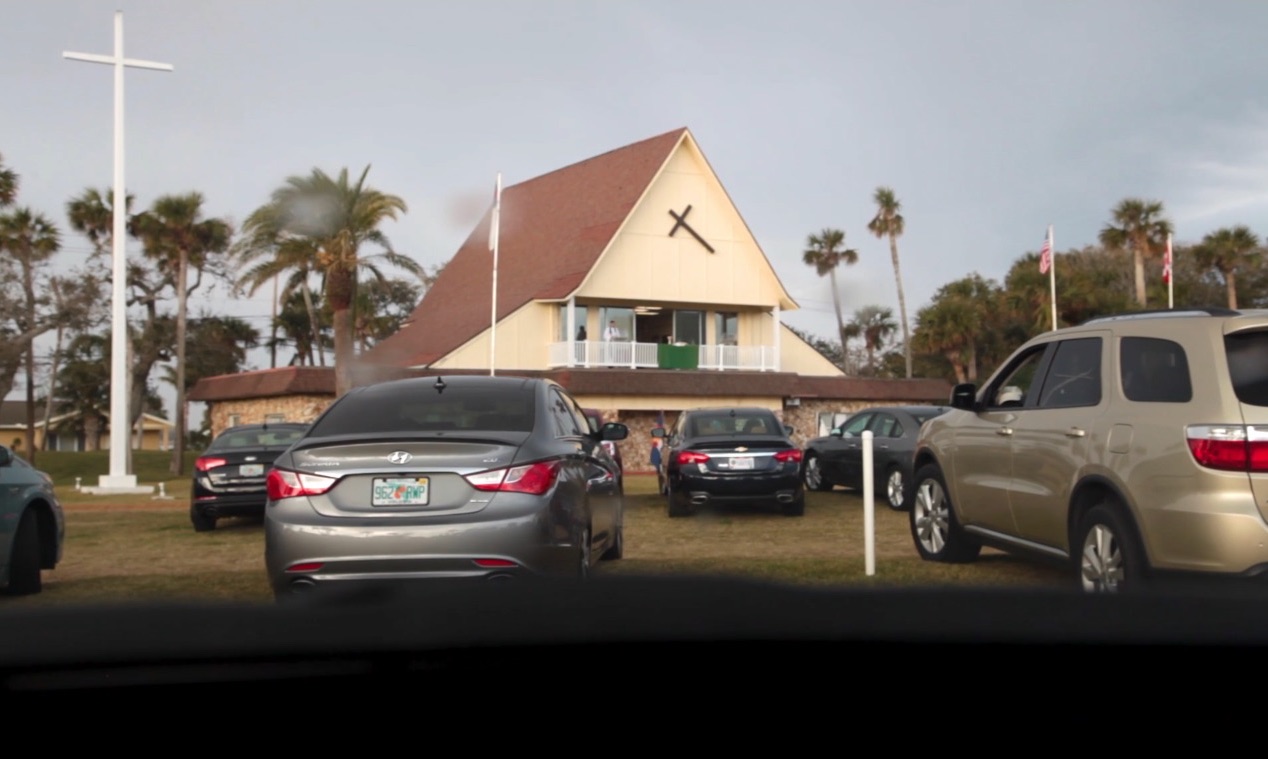Marathon Screenings presents Sunshine and Noir: Film in the City of Angels, a summer series featuring artist’s films that explore the myths and makeup of Los Angeles. Expanding on Reynar Banham’s The Architecture of Four Ecologies, the series looks to oil, water, concrete, and people as the elements that constitute LA’s architecture. Investigating the built environment, the communities that reside within, and the myriad dreams held by those who call the City of Angels home, the series probes manifold historical and cultural layers as a means to envision a new future for “an island on the land.”
Host: NeueHouse Hollywood
Dates: July 12 - September 20.
Artists: Pau Pescador, Kerry Tribe, Nina Sarnelle, Clarissa Tossin, Catherine Opie, Agnès Varda, Barbara McCullough. Screenings are followed by a discussion with the artist, curator, or guest speaker.
PROGRAM:
July 12 Pau Pescador, The Founding of Los Angeles, 2018, 53:00
Conversation with Pau Pescador after the screening
On September 4, 2017, the anniversary of the founding of the city of Los Angeles, artist Pau Pescador began filming within the unrenovated levels beneath The Main Museum to produce a video work about the history of L.A. As the project grew, Pescador expanded their research to include audio conversations conducted with local residents, historians, and scholars where they asked them to recount lesser recognized moments, both historical and personal. The resulting film is a set of episodic stories and experiences of L.A. In this piece, Pescador postulates and attempts to document the city’s vast and expansive history in the period of a single film.
July 26
Kerry Tribe Exquisite Corpse, 2016, 51:00
Conversation with Kerry Tribe after the screening
Exquisite Corpse is a 51-minute film that traces the 51-mile Los Angeles River from its origin in the San Fernando Valley to its terminus at the Pacific Ocean. Along the way, Tribe’s camera captures its varied landscapes, neighborhoods, creatures, and communities through a string of meditative encounters that collectively describe the River at a particular moment it its evolution.
August 09
Nina Sarnelle Sound for the Long Hole, 2018, 42:00
Conversation with curator Ceci Moss (Director and Chief Curator of the Mandeville Art Gallery at UC San Diego) and Zandie Brockett (Director of Community and Culture at NeueHouse)
Nina Sarnelle’s Sound for the Long Hole is a 40 minute composition that considers another world far below the city’s surface. Created after Sarnelle came to the realization that she had been living next to an oil tower and several deep drilling holes (one 9,514 feet deep), the film takes us across her neighborhood, measuring out the length of one oil well in twine, while mining production data from the site’s many historical owners and remembering a 1985 methane gas explosion at the site of a Ross Dress for Less discount store.
August 23
Clarissa Tossin's CH’U MAYAA (2017)
Catherine Opie's The Modernist (2017).
Conversation with Clarissa Tossin and Catherine Opie
Ch’u Mayaa re-signifies Frank Lloyd Wright’s Hollyhock House by depicting the building as a temple, and imbuing it with a dance performance based on gestures and postures found in ancient Mayan pottery and murals. The Pre-Columbian Mesoamerican features of the architecture are highlighted and acknowledged as a fundamental influence in Wright’s project.
The Modernist presents a dystopian view of Los Angeles, a city that has figured prominently in Opie’s work over the years. The film is in conversation with Chris Marker’s radical 1962 photo-roman, La Jetée, which utilizes still photography to tell a story of longing, time travel, and the terror of nuclear apocalypse. Opie’s film continues this dialogue, employing similar formal and narrative structures to a different end. Focusing on contemporary issues like natural disasters, the breakdown of the American political system, global tragedies, and the Los Angeles housing crisis, the film stars Stosh, a.k.a. Pig Pen, a close friend of Opie’s who has appeared in many of her photographs, as a struggling artist who is obsessed with landmark mid-century modern architecture.
September 6
Agnès Varda, Mur Murs, 1981. 82:00
Conversation with Curator Asha Bukojemsky (Marathon Screenings).
In 1979 Agnès Varda created this kaleidoscopic documentary about the striking murals that decorate the city after returning to Los Angeles from France. Bursting with color and vitality, Mur Murs is as much an invigorating study of community and diversity as it is an essential catalog of unusual public art. Venturing from Venice Beach to Watts, Varda looks at the murals of LA as backdrop to and mirror of the city’s many cultures. She casts a curious eye on graffiti and photorealism, roller disco & gang violence, evangelical Christians, Hare Krishnas, artists, angels and ordinary Angelenos.
September 20
Barbara McCullough, Water Ritual #1: An Urban Rite of Purification, and Shopping Bag Spirits and Freeway Fetishes: Reflections on Ritual Space, 1981. 60:00
Conversation with filmaker Darol Olu Kae, filmaker Ben Caldwell, Zandie Brockett (Director of Community and Culture at NeueHouse) and Asha Bukojemsky (Marathon Screenings).
This film explores nine Los Angeles based artists reflecting on ritual in their life and art. Artist David Hammons discusses the role of chance and improvisation in his work while working on sculpture on a waste site while N’Senga Nengudi talks about staging her performances in freeway underpasses. Spanning performance to spoken word, environmental sculpture to music each artist talks about how ritual and cultural traditions informs their work. This experimental essay intercuts interviews, documentation, and photographs with the music of Don Cherry seeking to adjust the criteria and language used to talk about artists of color.












